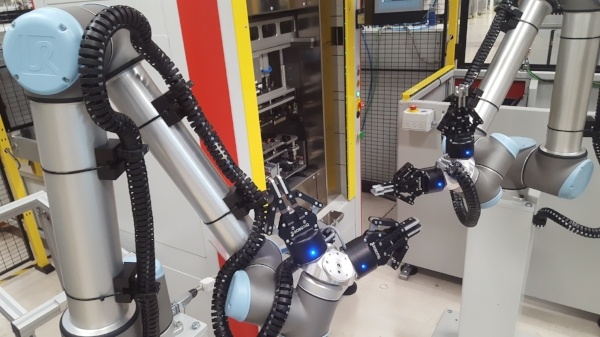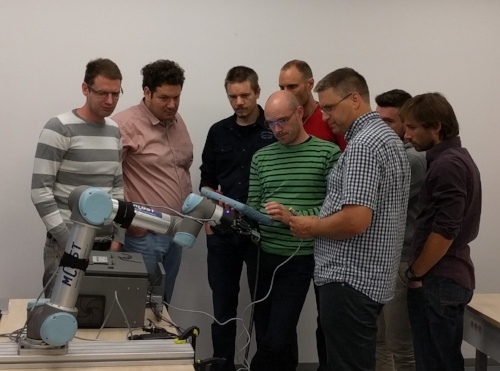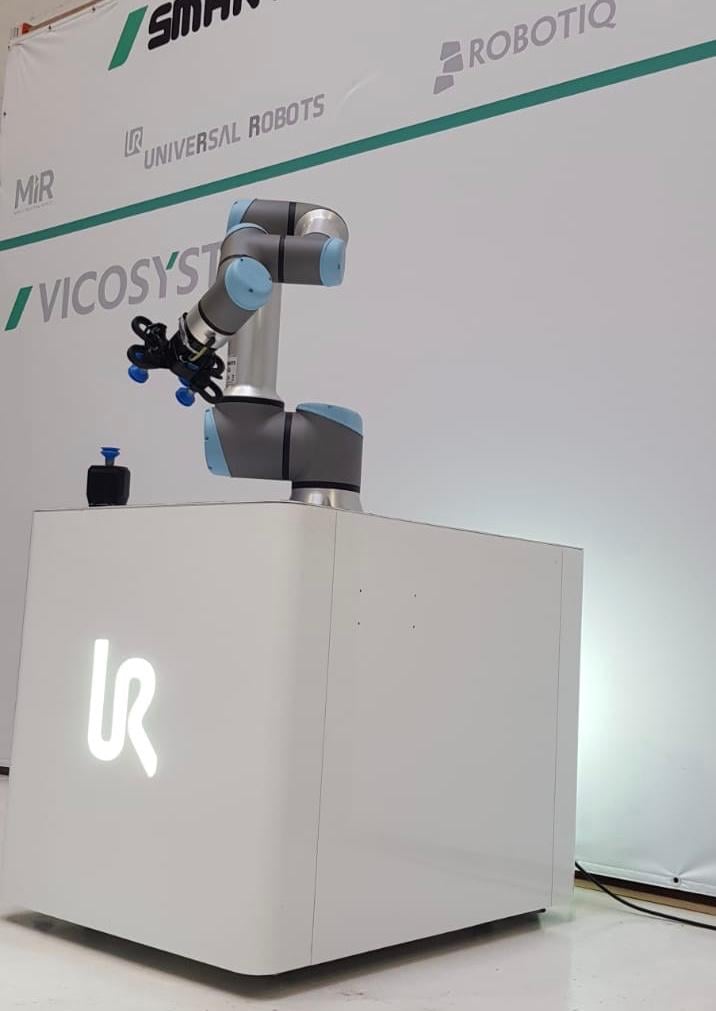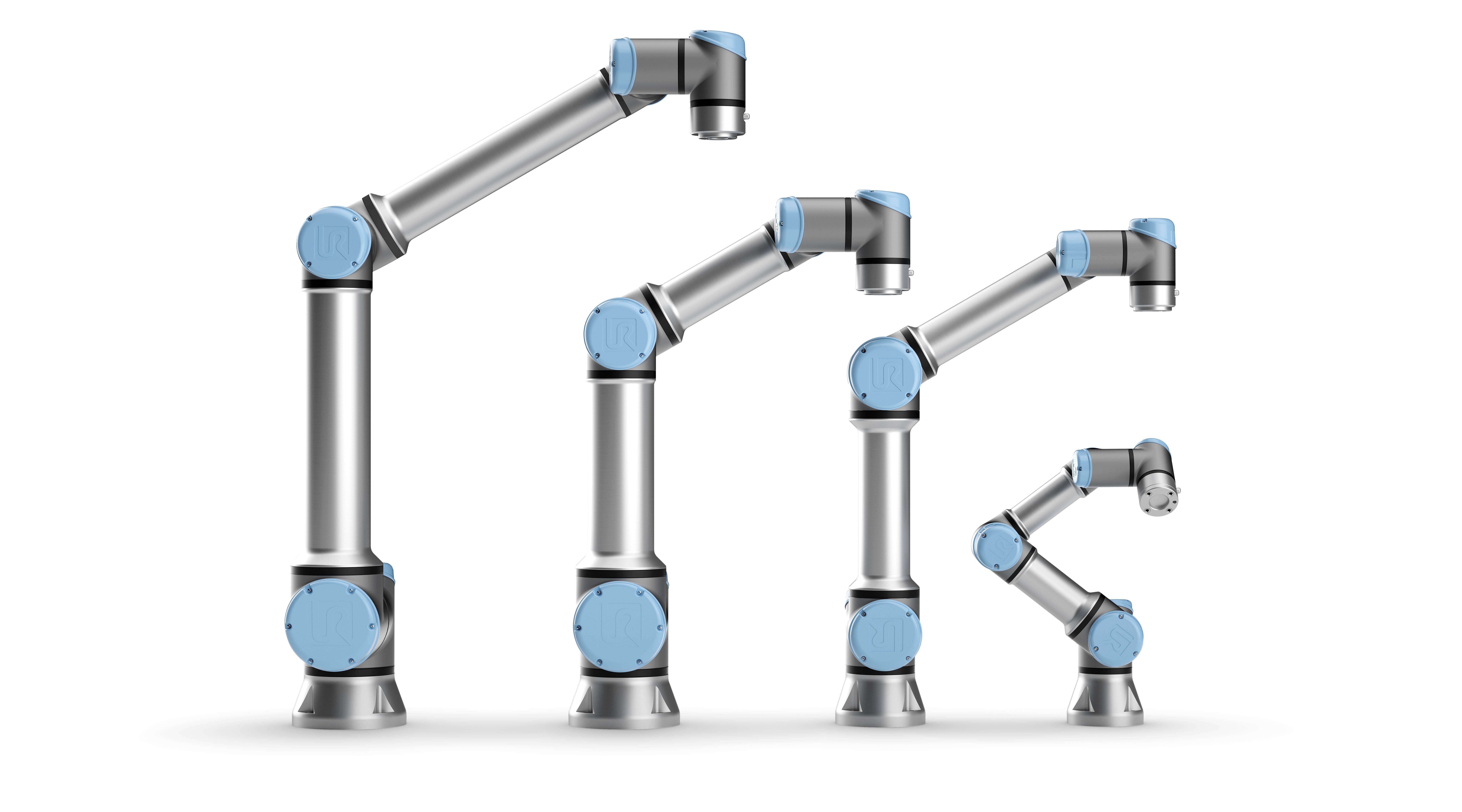How Long Does it Take to Train a Collaborative Robot?

Posted on May 08, 2017 7:00 AM. 3 min read time
In today’s world of manufacturing, robots aren’t the exception to the rule, they are the rule. Robots are everywhere in today’s plants, but the old fenced versions are quickly being replaced by something much more exciting. Known as collaborative robots, these new creations work alongside humans, complementing their work and taking the responsibility of mundane and repetitive tasks for them.

How long does it take to train something this complex? After all, it must be consistent and maintain safety standards around other humans. Join us as we look at the process of training a collaborative robot now, and in the future.
Training a Collaborative Robot: The Present
With traditional fenced robots, training can take weeks, as a programmer has to make numerous changes to the software just to program new tasks. Thankfully, this is not the case with today’s collaborative solutions.
In many cases, today’s robots are equipped with switches and buttons that allow users to put them into a training mode. Once this is done, they can guide the robot’s arms and interactive devices and demonstrate the task.
Once this is completed, the robot can then perform the exact task at a consistent rate, thus giving the human in the equation more time to accomplish more complex tasks. A few examples of this in action are the robots offered by Rethink Robotics and Universal Robotics.
While demonstrating the task is simple, it’s worth noting that training a collaborative robot still requires time to properly calibrate parts like grippers before you can train tasks. Even so, the time table is far less than it would be with a fenced robot. In this pick and place video with Baxter, we see how easy it is to implement simple tasks on the fly.
Another excellent example is the teach pendent-based programming that Universal Robotics uses to allow people to quickly program their collaborative robots. A simple button press on the teach pendent allows the user to turn the robot into a gravity-free mode that allows them to physically move the robot and program new waypoints.
This video on the subject demonstrates how just about anyone can program a simple pick-and-place operation using this design.
How We Will Train Collaborative Robots in The Future
Researchers at the University of Maryland have been working with the idea of creating “robot training academies.” Yezhou Yang, a graduate student at the university’s Autonomy, Robotics and Cognition Lab said that “We ask an expert to show the robot a task, and let the robot figure out most parts of sequences of things it needs to do, and then fine-tune things to make it work.”
To test this theory, they used Baxter from Rethink Robotics. The robot watched a person mix a drink and then followed those actions. The concept of simply observing humans to train a robot is one that is very exciting in terms of fast training and programming solutions.
The concept involves using a computer system to pair certain actions with video footage of people performing various tasks. A paper from the study showed that a robot can learn to pick up different objects by watching thousands of instructional YouTube videos.
Another option is to network the robots together so they can share learned experiences, such as the demonstration in this video.
Through the use of two systems, it can learn to recognize different objects, and then learn how to grasp them. As we move forward with new studies that look at the new approaches to learning like this one, and the focus on creating more collaborative solutions, we’ll see options like these become more prevalent than ever.
Final Thoughts
Training a collaborative robot takes significantly less time than a fenced variation. Have you had experience training these types of robotics? Let us know how it went in the comments!









Leave a comment